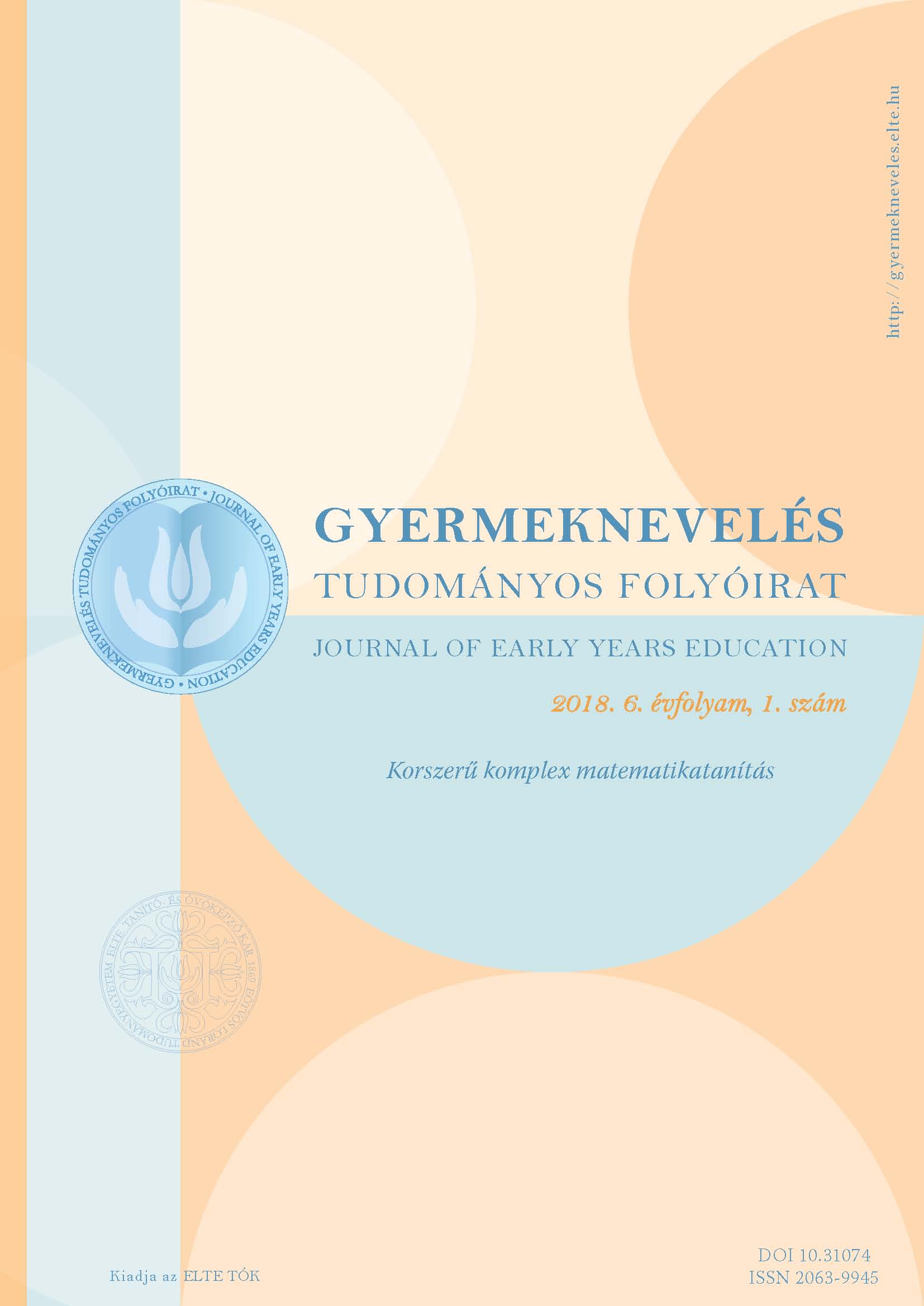A törtfogalom fejlődésének segítése az alsó és a felső tagozat határán
DOI:
https://doi.org/10.31074/gyn201818698Kulcsszavak:
törtfogalom, alsó tagozatos matematika, felső tagozatos matematika, szemléltetés, tankönyvelemzésAbsztrakt
A tanulmány a törtfogalom fejlődésének segítéséről szól. Megoldandó probléma, hogy az alsó tagozat végére, 4. osztályban a tanulók jellemzően egyféle törtértelmezéssel találkoznak: egységtörtek és ezek többszörösei kerülnek elő, általában többféle manipulatív és képi szemléltetés mellett. Ehhez képest 5. osztályos kortól a törtek a racionális számok halmazának képviselőiként kerülnek elő, két egész szám hányadosaként. Ahhoz, hogy az alsó tagozaton kialakult törtfogalom megfelelően segítse a felső tagozatos tanulmányokat, szükségesnek látjuk a C. Neményi Eszter által „második értelmezésnek” nevezett törtértelmezés hangsúlyosabb megjelenését. A törtfogalom második értelmezése azt jelenti, hogy valamely egység többszöröseinek valahányad részeként tekintünk az egységtörtek többszöröseire. Javaslatunkat tankönyvrészletek elemzésével és a nemzetközi szakirodalomban megjelent kutatási eredményekkel támasztjuk alá.
Letöltések
##submission.downloads##
Megjelent
Hogyan kell idézni
Folyóiratszám
Rovat
License
Copyright (c) 2018 Szerző

This work is licensed under a Creative Commons Attribution-NonCommercial-ShareAlike 4.0 International License.

